A guide on violin geared tuning pegs
Have you ever gotten frustrated trying to tune your violin? Have your pegs ever slipped in the middle of a rehearsal, or even during a performance?
Violin pegs have remained relatively the same for hundreds of years, until quite recently when geared pegs entered the scene. These pegs have small gears inside that turn the peg very precisely. These can be a game changer for those of us who struggle to tune with the pegs!
Today we’ll talk about traditional violin pegs, how geared pegs work, and if they might be a good fit for you. Let’s get started!
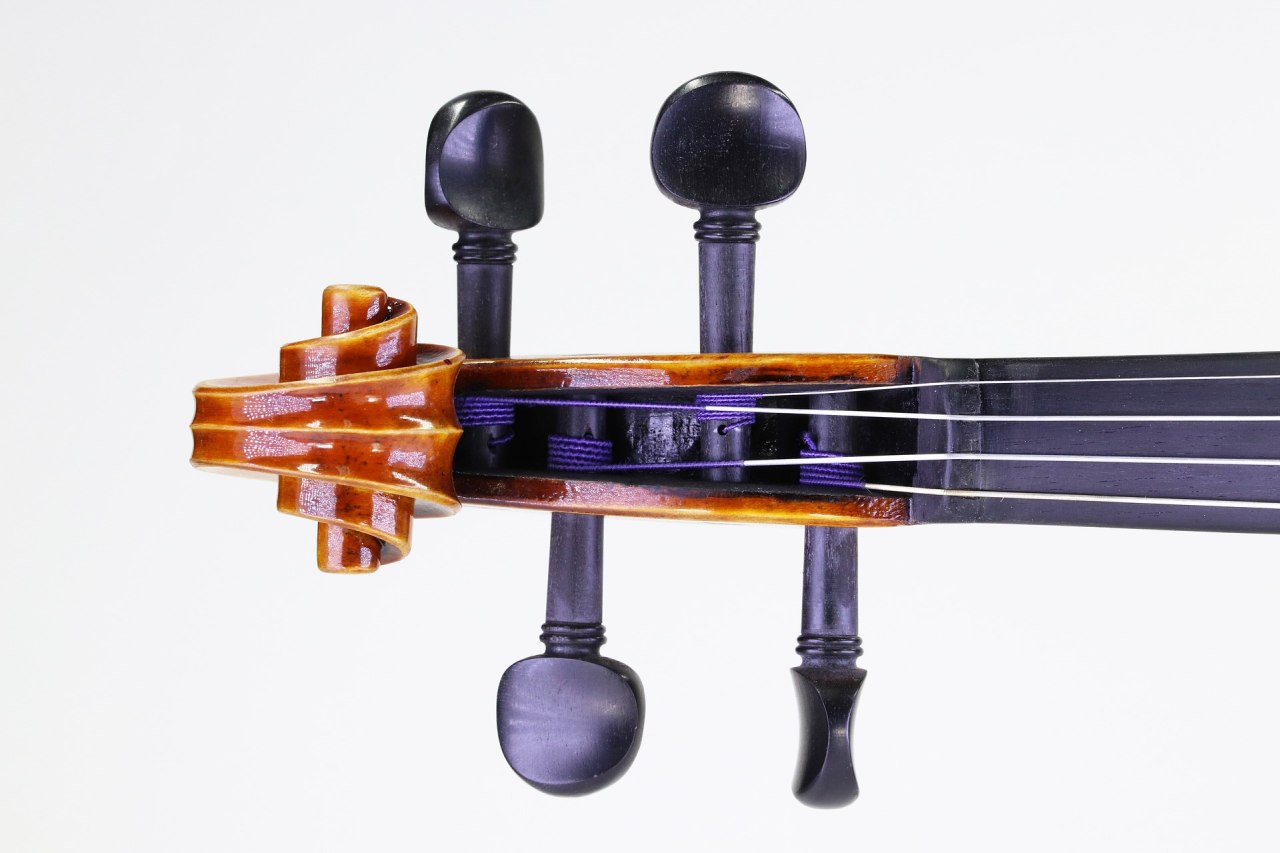
Traditional Violin Pegs
While the violin has evolved over the centuries, one part has remained almost exactly the same: tuning pegs.
Traditional violin pegs are made of wood and are wedge-shaped, which allows the peg to sit in the peg box by the scroll through friction. This is why some refer to them as friction pegs! Players use the peg head at the end to turn the peg and tune the instrument.
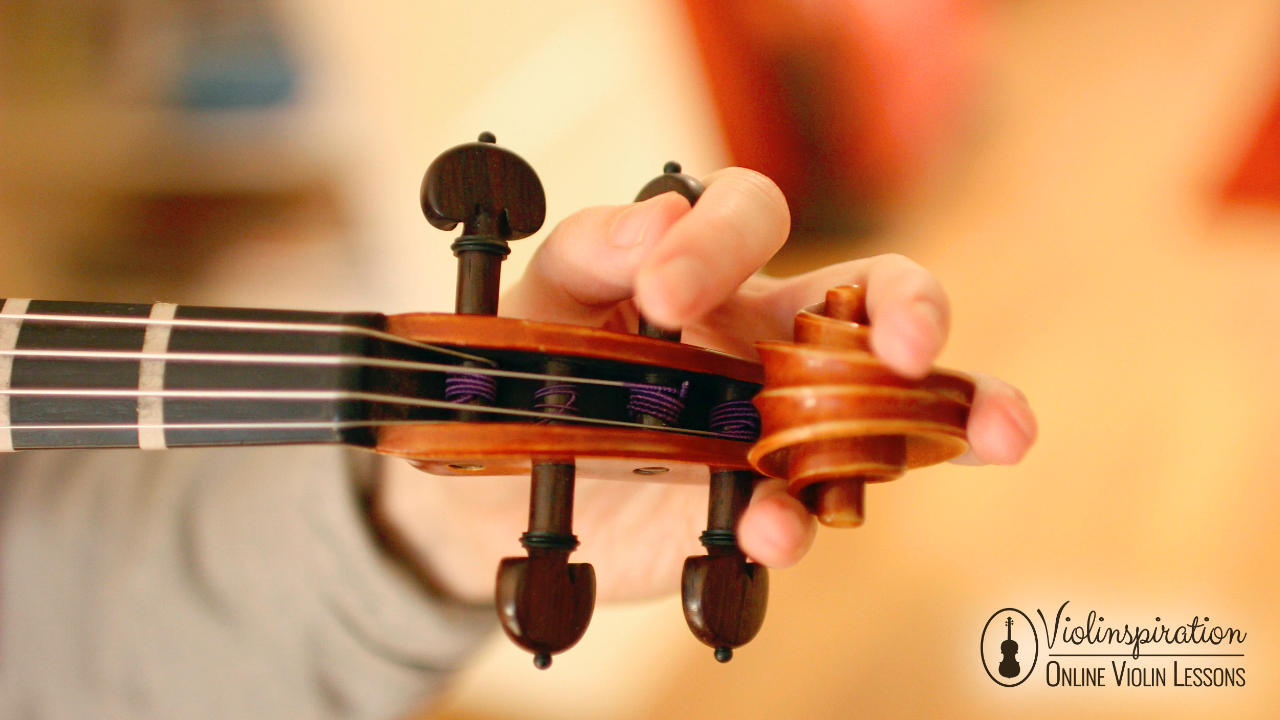
It works well enough, but through temperature and humidity changes, pegs can swell up and become difficult to move or shrink making the violin fall out of tune on its own.
Through the years, violinists have dealt with standard pegs, but we now have another option: geared pegs.
What are Geared Tuning Pegs?
Geared pegs look almost identical to traditional ones, except they have gears inside that control how they turn. These tuners are usually made out of wood, metal, or composite materials. The planetary gears inside keep the string from moving and going out of tune.

Some geared pegs are even glued into the peg box!
This is great for tuning: however, you adjust the peg is how it’ll stay. No more jamming the peg into the peg box and hoping it’ll stay!
This also means that you can make small adjustments with just the pegs; fine tuners are no longer needed.
Benefits of using Geared Pegs
There are quite a few benefits of using these pegs!
1. Precise tuning
It’s super easy to tune precisely with geared pegs, which is the best benefit! I know I’ve struggled to keep my violin in tune when the pegs just don’t want to stay put in the peg box.
Geared pegs hold their tuning better than traditional pegs. While traditional pegs can slip due to climate and humidity changes, geared pegs will stay in place. This guarantees better stability.
2. Changing strings is easier
It also means that changing strings is easier! Usually, when you put on new violin strings, they need to loosen up and become accustomed to being stretched out on the instrument. This pulls on traditional pegs, causing them to drop out of tune. With geared pegs, new strings will still pull on the pegs, but the gears inside keep the pegs from moving as much as traditional ones. This means you won’t need to retune your violin quite as much as you might be used to after changing strings!
3. Less maintenance
Less maintenance is required for geared pegs. Traditional pegs expand and shrink, and sometimes get stuck. You may need to use a peg compound to allow those pegs to move. Geared pegs are much more stable in general, and you’ll think about them a lot less.
Sometimes traditional pegs will get wedged too far into the holes in the peg box, and, over time, will widen the holes naturally. If the holes become too large for the pegs, the peg box will need to be bushed: the original holes are covered in wood, and new holes are drilled. As long as you keep your geared pegs installed in your violin, the holes will not expand!
4. No more fine tuners!
Another great benefit of these pegs is the fact that fine tuners aren’t required to make small tuning adjustments. Of course, not everyone uses fine tuners with traditional pegs, but they make precise tuning much easier. Since the gears in geared pegs are so small, you can just turn the peg to make a very small, fine adjustment. Fine tuners can actually muffle the sound of the violin, and they can add a bit of weight to an instrument. Not having fine tuners while still having the ability to tune precisely is a great mix!
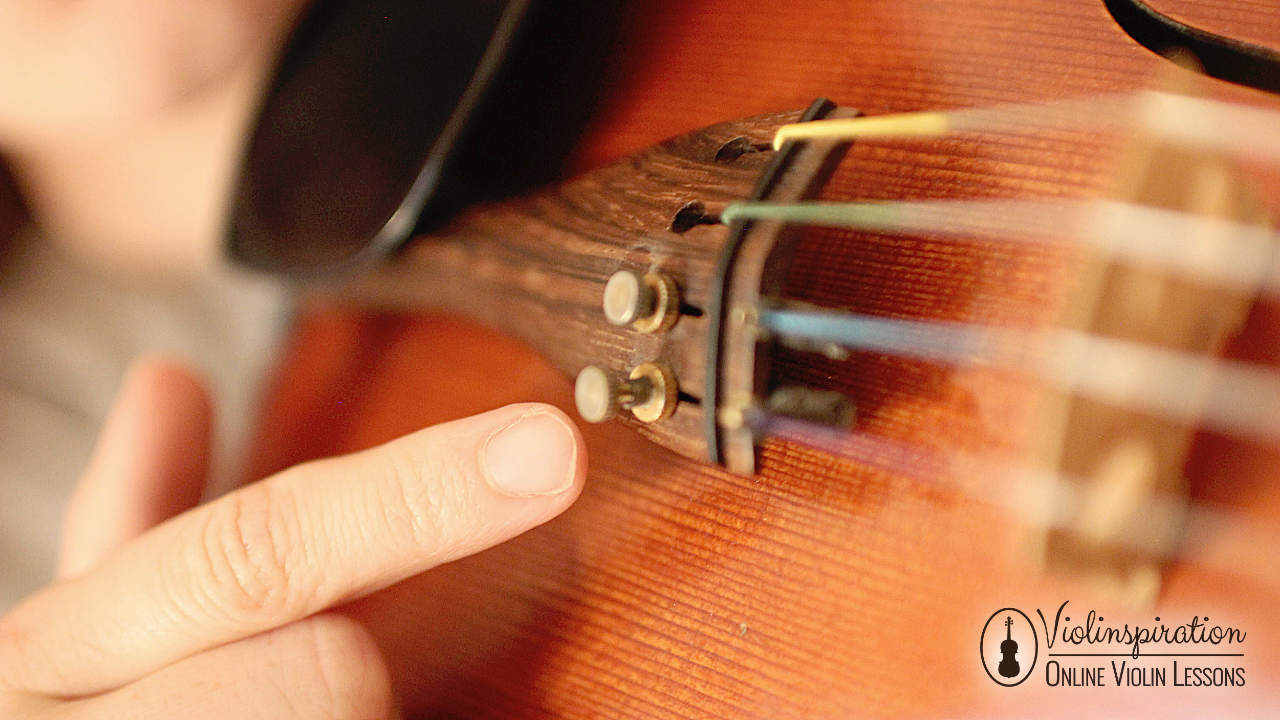
5. Less strength required
Geared pegs are also great for those with limited mobility and young students who don’t have enough strength to turn friction pegs. Without the tension from strings pulling on the pegs, geared pegs are much easier to turn than friction-based ones!
Drawbacks of Geared Tuning Pegs
There are also some cons of using geared pegs.
1. Price Tag
One of the biggest drawbacks of geared pegs is the price. A set of pegs can cost $100 or more, and having them installed adds to that price.
2. Weight
Older models of geared pegs tend to be heavier than newer ones, and weight is a big concern for many violinists who are considering switching to geared pegs. Most planetary-geared pegs that are made now are only minimally heavier than traditional pegs, although most players don’t notice the difference. Either way, putting more weight in the peg box end of the violin will throw off the balance of your instrument, and could be a little jarring to play on. If you’re very concerned about the weight, I’d suggest researching the weights of different brands and even trying an instrument with them installed before committing.
3. The Look and Feel
Many professional musicians just prefer the look and feel of traditional pegs and are resistant to changes. Others may not want to drill new holes in the peg box of their antique violin.

Violin Geared Tuning Pegs to Buy
Here are the geared tuning pegs you can buy at popular music shops and online:
Wittner Finetune Geared Peg set
SPECIFICATIONS
Price: $75.99
Materials: Composite and light alloy material
Size: – 7.8mm Violin (for 4/4 – 3/4 size violin) – 8.6mm Violin (for 4/4 – 3/4 size. violin) – 7.2mm (for 1/2 – 1/4 size violin)

Wittner Finetune Geared Peg set
Support us for more FREE content No extra costs for you Recommended by Violinists
Knilling Planetary Geared Peg set
SPECIFICATIONS
Price: $100.18
Materials: ABS synthetic
Size: – 7.8mm – 8.3 mm – 8.5mm
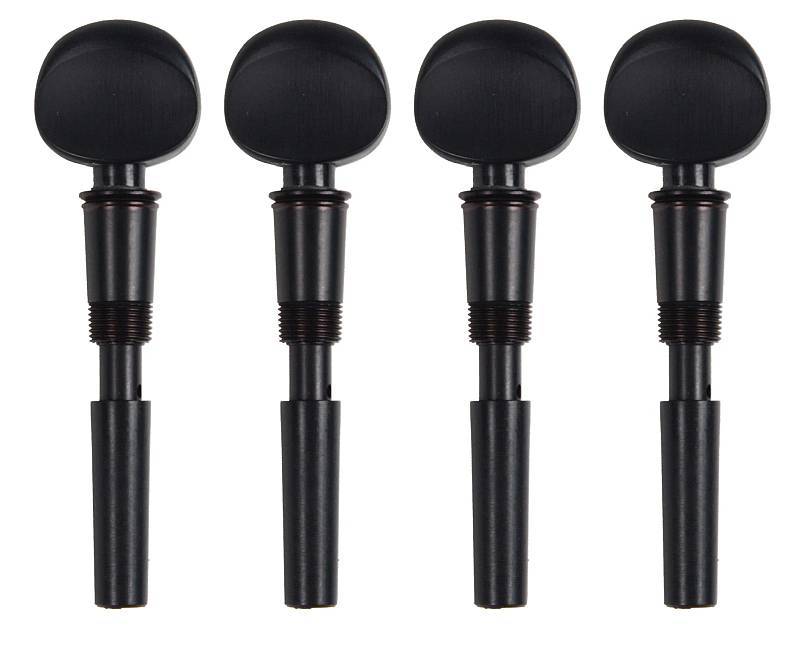
Knilling Planetary Geared Peg set
Support us for more FREE content No extra costs for you Recommended by Violinists
Installing Geared Pegs
Most times, you’ll need to retrofit geared pegs on an existing violin. While some violins come pre-installed with geared tuning pegs, they’re harder to find and may be more expensive. If you want to add geared pegs to a violin, you’ll want to take it to a luthier.
Traditional pegs can be shaved down to fit into an existing hole, but the material of most geared pegs shouldn’t be trimmed. Because of this, geared pegs come in different widths. To avoid excess drilling on your instrument, measure the width of your current pegs and find a set closest to your current measurement.
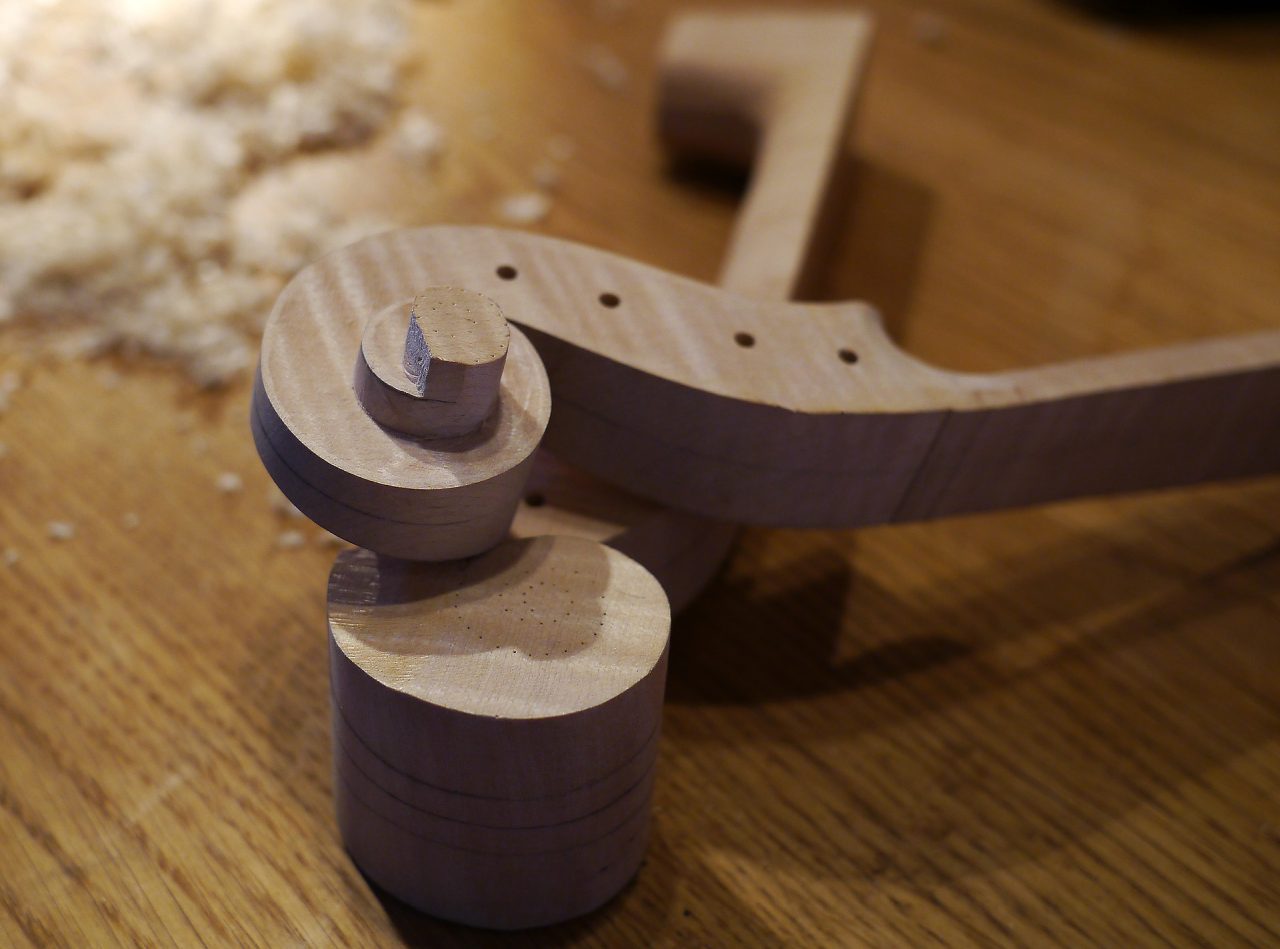
Depending on the size of the gear pegs and the holes in your instrument, the luthier may need to expand the holes to fit in your new pegs. In other cases, if your old pegs were larger, the peg box may need to be bushed with new holes to accommodate the change.
Learn More
Geared pegs are an exciting new technology, and I hope more and more violinists continue to benefit from them!
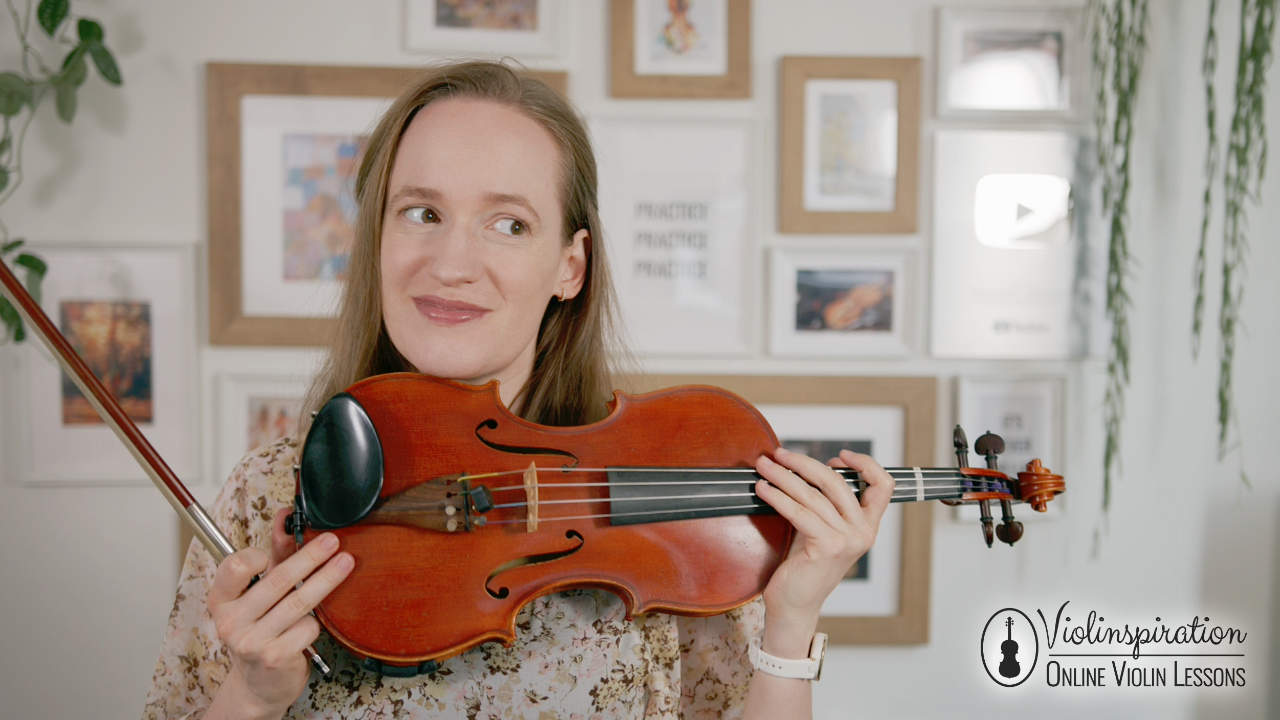
Interested in other cutting-edge violin accessories and upgrades? I think you might like reading about fretted violins or making a cheap violin sound better. Enjoy!
Free Violin Sheet Music in Your Inbox
Subscribe to my mailing list to receive free sheet music, playing tips, a weekly portion of motivation, and never miss a new video or course I release!
























